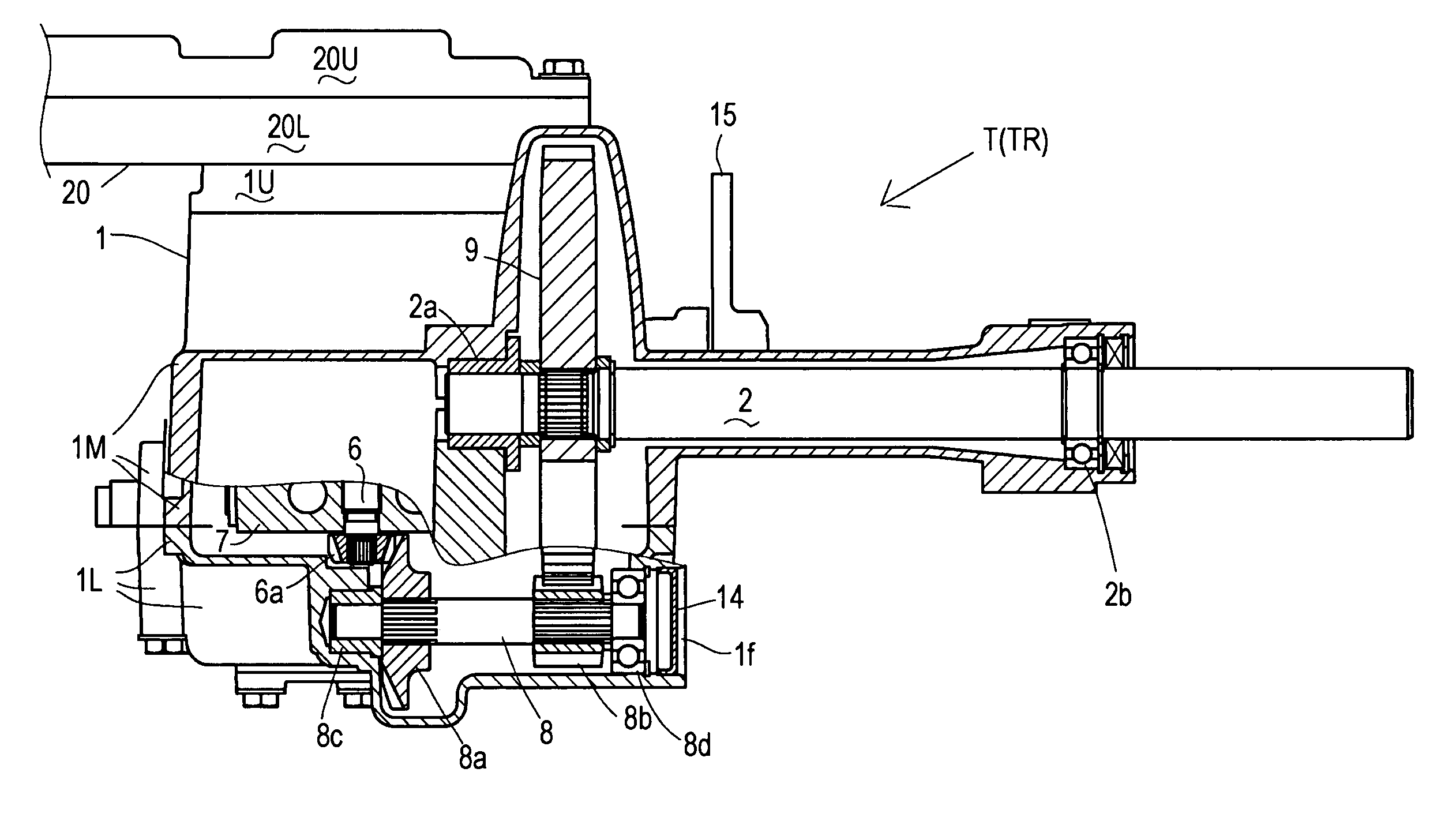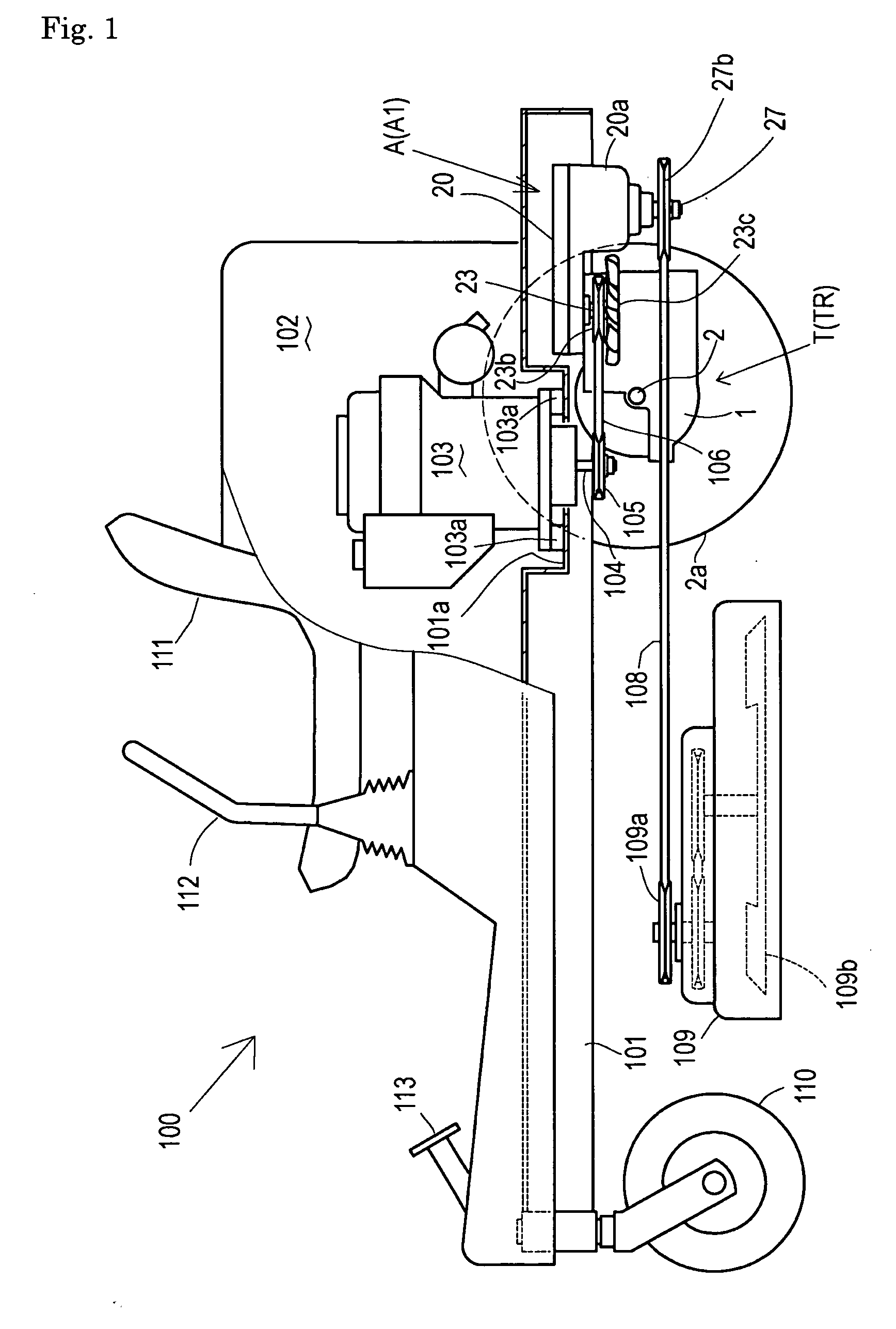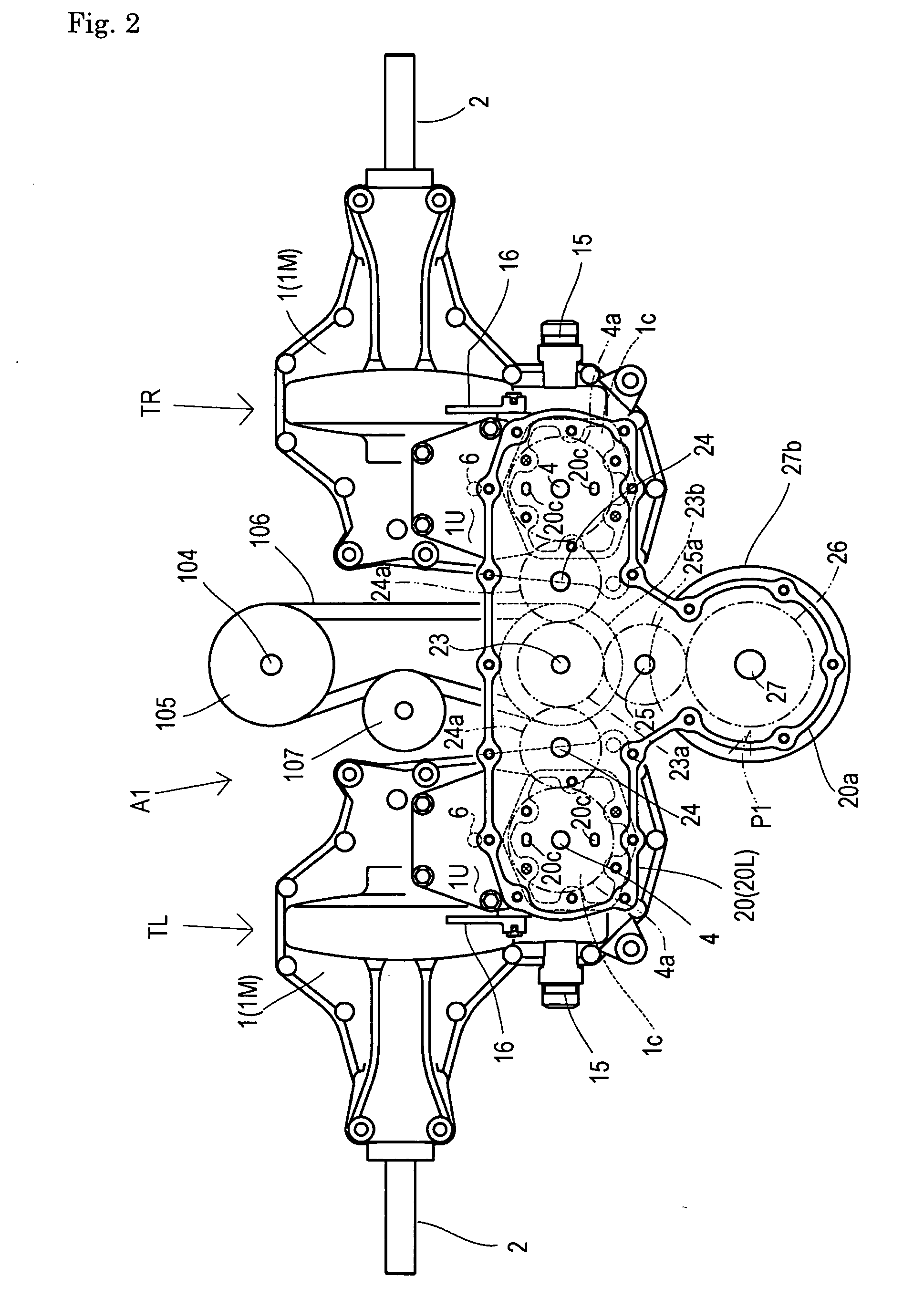Power transmission apparatus for working vehicle
a technology for power transmission apparatus and working vehicles, which is applied in the direction of vehicle components, control devices, and gears, etc., can solve the problems of complicated tension adjustment work, inability to integrate with the transaxle, and complicated belt transmission mechanism adjustment work, so as to reduce costs, improve the weight balance of the power transmission apparatus, and facilitate the connection.
- Summary
- Abstract
- Description
- Claims
- Application Information
AI Technical Summary
Benefits of technology
Problems solved by technology
Method used
Image
Examples
Embodiment Construction
[0057] Power transmission units A1 to A4, B, C1, C2, D and E, serving as embodiments of a unified power transmission apparatus (hereinafter, referred to as a “power transmission unit”) according to the present invention, will be described.
[0058] In a common structure shared among all these power transmission units, a pair of left and right symmetric transaxles TL and TR (generally named as “transaxles T”) include respective housings 1, and a gear casing is spanned between housings 1. A working apparatus driving power take-off device including a clutch is disposed in (or in continuous connection to) the gear casing. Further, the gear casing incorporates a primary drive shaft drivingly connected to a prime mover, a traveling drive train from the primary drive shaft to the respective transaxles, and a working apparatus drive train from the primary drive shaft to an input member of the working apparatus driving power take-off device. Common transaxles T are adapted to all the embodimen...
PUM
 Login to View More
Login to View More Abstract
Description
Claims
Application Information
 Login to View More
Login to View More - R&D
- Intellectual Property
- Life Sciences
- Materials
- Tech Scout
- Unparalleled Data Quality
- Higher Quality Content
- 60% Fewer Hallucinations
Browse by: Latest US Patents, China's latest patents, Technical Efficacy Thesaurus, Application Domain, Technology Topic, Popular Technical Reports.
© 2025 PatSnap. All rights reserved.Legal|Privacy policy|Modern Slavery Act Transparency Statement|Sitemap|About US| Contact US: help@patsnap.com



